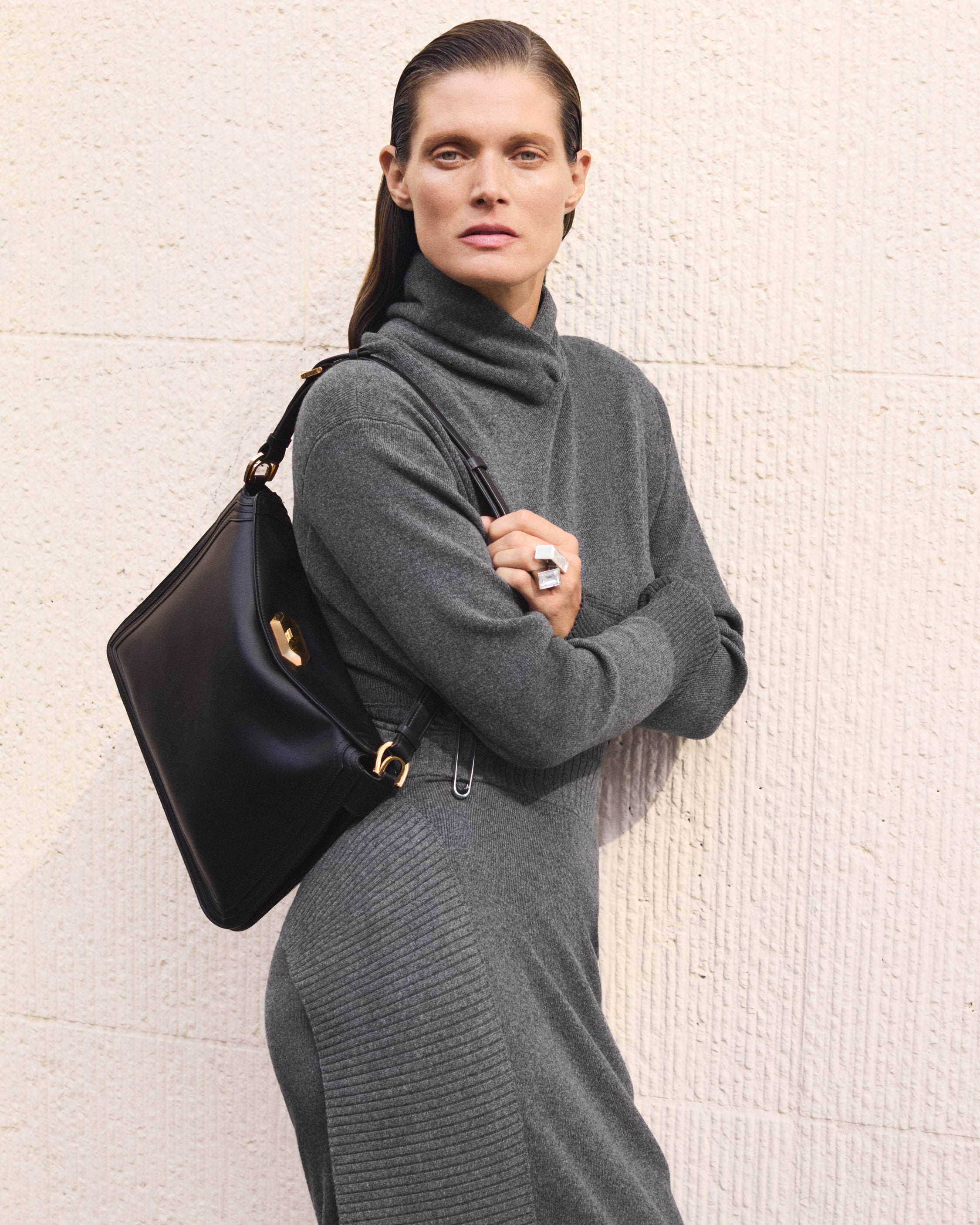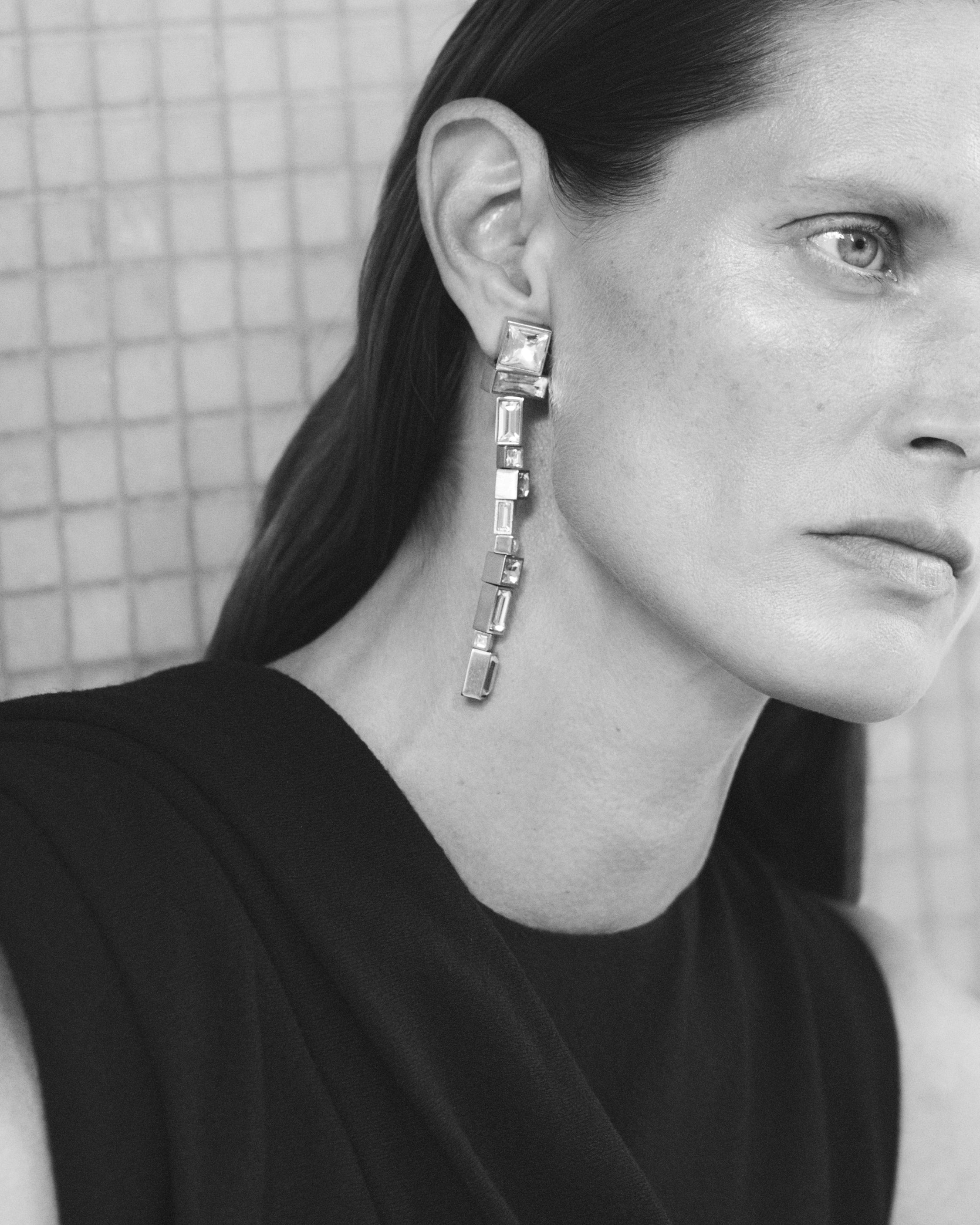History of the House
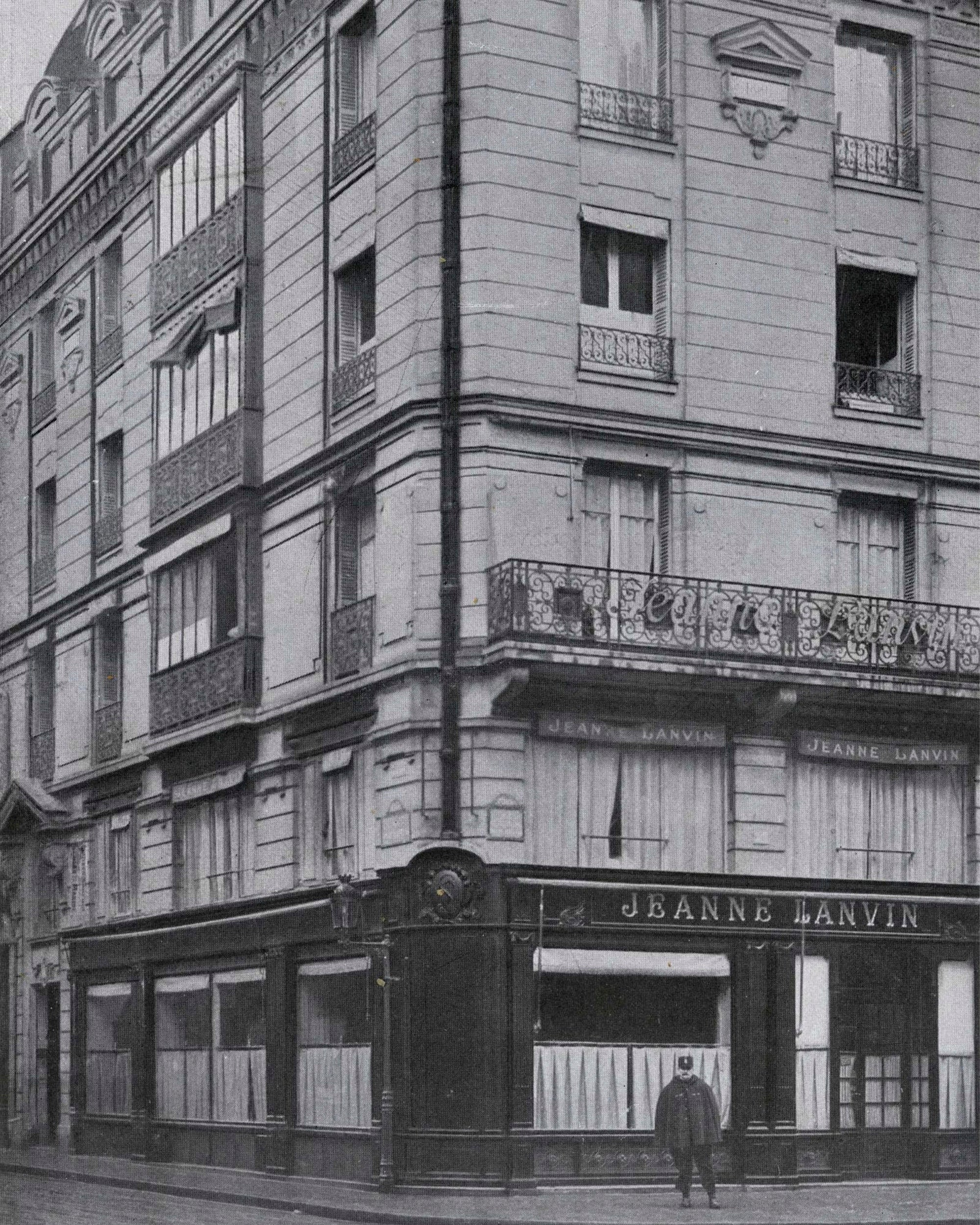
1889 - Jeanne Lanvin, The Milliner
The story of Lanvin began in 1889, in a small hat shop in the heart of Paris.
Jeanne Lanvin had just turned 22 and finished her apprenticeship when she opened her first hat shop in 1889 on the upper level of a store located at 16 Rue Boissy d’Anglas. Even at that young age, her talent was truly dazzling.
Four years later, Jeanne Lanvin’s crowning point came. She obtained a commercial lease on the prestigious Rue du Faubourg Saint-Honoré and established her eponymous fashion house. Her success was instant and Parisians would flock to her boutique, named “Lanvin (Mademoiselle Jeanne) Modes.”
Jeanne Lanvin’s fashion house. Paris, 22 rue du Faubourg Saint-Honoré. © Studio Lipnitzki / Roger-Viollet
1897 - The Mother and The Child
The birth of her daughter Marguerite in 1897 turned Jeanne Lanvin’s world upside down.
A tightly-bound relationship formed between Jeanne and her daughter. Marguerite became her muse and Jeanne would use luxurious fabrics to create the wardrobe of every little girl’s dreams. The elegant Marguerite was quickly noticed by her friends’ mothers, who in turn became customers of the Lanvin fashion house.
Faced with this new commercial success , and now a savvy businesswoman , Jeanne Lanvin opened a children’s clothing department in 1908 and devoted an entire section of her store to this new thriving business.

1909 - Jeanne Lanvin, The Designer
In 1909, orders for children’s clothing began to exceed those for hats. Jeanne Lanvin decided it was time for her fashion house to enter into a new era: that year, she opened a Young Ladies’ and Women’s department. Mothers and daughters would come and choose their Lanvin outfits together. Day clothes, evening dresses, coats, and lingerie: Paris fell in love with the entire scope of Lanvin’s creations.
Ambitious and determined, Jeanne Lanvin became a member of the Chambre Syndicale de la Couture (the Parisian Fashion Council) that same year, officially switching her status from milliner to designer.
Both a mother and businesswoman , Jeanne Lanvin preferred to keep to herself. She was distant from social events and stood out within the elite circle of Parisian couture.
Jeanne Lanvin draping fabric on a mannequin, circa 1936 © Laure Albin Guillot / Roger-Viollet

1915 - Lanvin and The World
Being one of the most respected Parisian fashion houses was not enough for Jeanne Lanvin. The designer set off to conquer the world in 1915, showing her designs all around the globe.
1915 - San Francisco International Exposition
1925 - Paris International Exhibition of Decorative Arts
1937 - Exposition of Art and Technology in Modern Life
1939 - Golden Gate International Exposition
1945 - The Théâtre de la Mode
Designs presented during the Lanvin show on the Normandie ocean liner, 1935 Gouache designs, © Patrimoine Lanvin
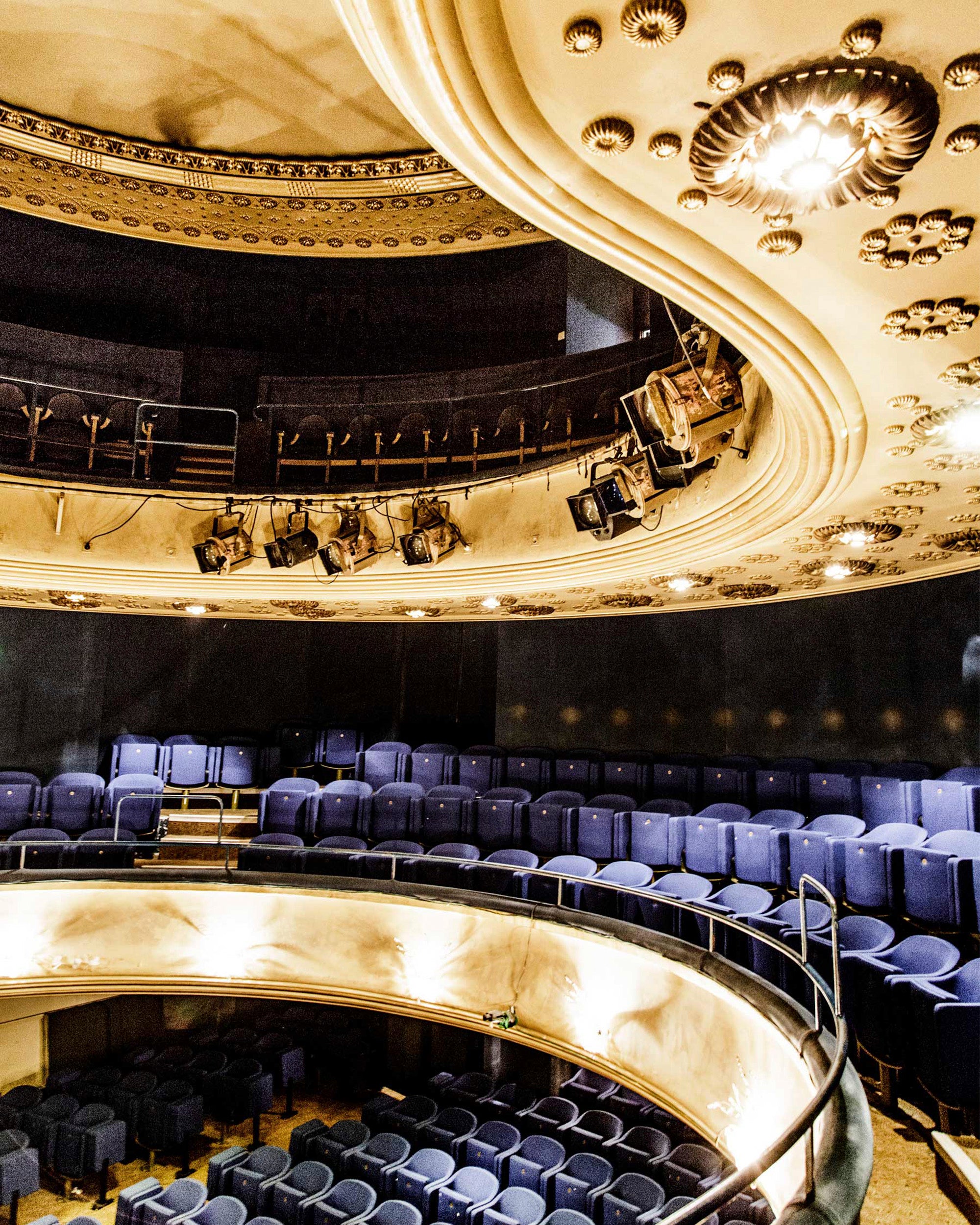
1920 - The Lanvin Way Of Life
Jeanne Lanvin had an innate flair for business, but she was also a visionary. Very soon, she realized that the success of a fashion house didn’t just lie in its creations.
During an event thrown by fashion designer Paul Poiret in 1920, Jeanne Lanvin met renowned architect-decorator Armand-Albert Rateau , who had just graduated from the famous École Boulle. Together they decided to create a pavilion dedicated to the art of living at 15 Rue du Faubourg Saint-Honoré. The store offered furniture, rugs, curtains, stained glass, wallpaper, and more in the purest Art Deco style of the era .
The Théâtre Daunou, decorated by Lanvin, Lanvin Decor, 1923 © But Sou Lai / Patrimoine Lanvin
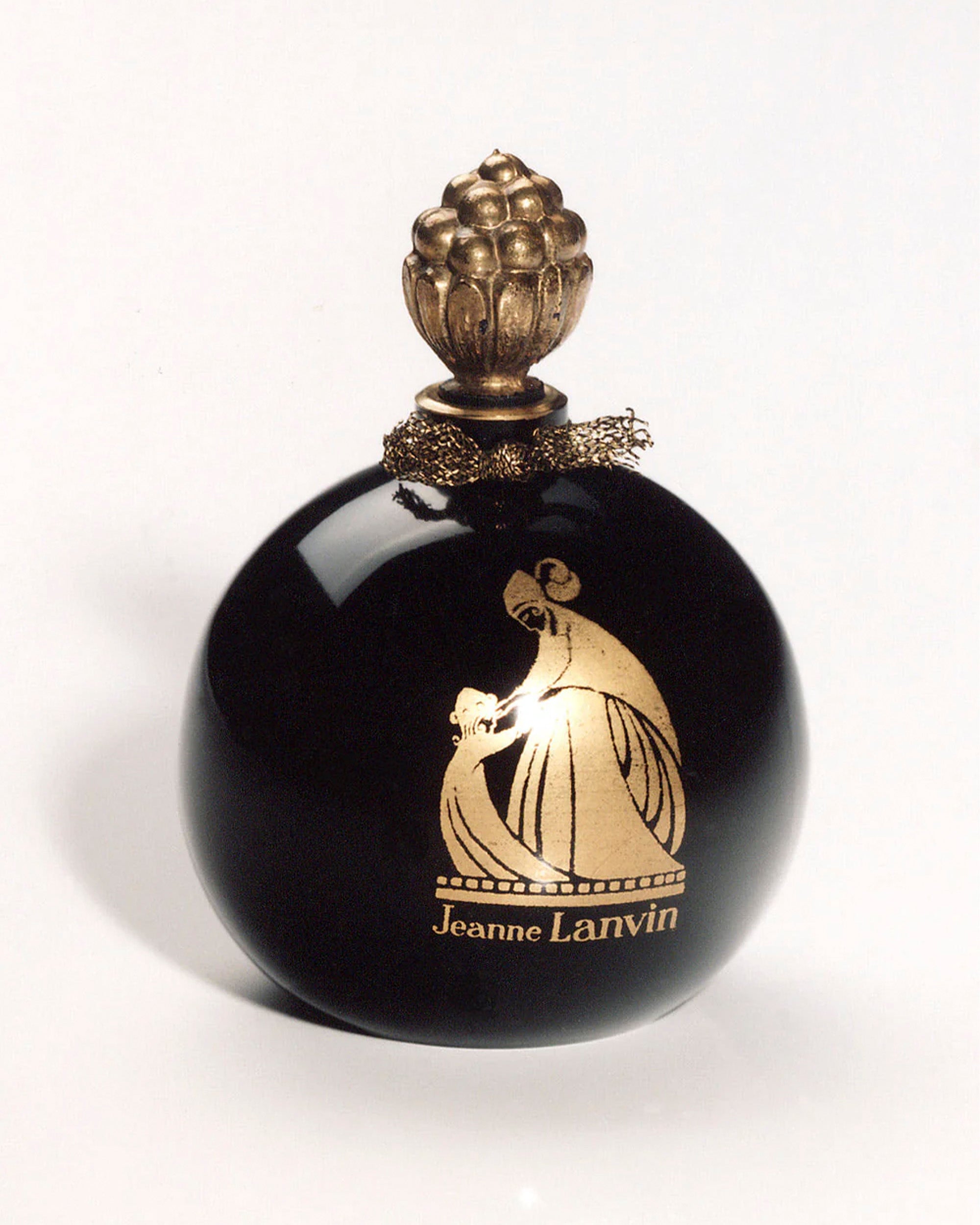
1924 - Lanvin Perfumes
In 1924, Lanvin Perfumes set up shop at 4 Rond-Point des Champs-Elysées. For the former milliner, it was obvious: perfume was an essential accessory on a woman’s dressing table.
The first fragrance was American. The perfume My Sin , formulated by Maria Zède and launched in the United States in 1925, was an immediate success.
It wasn’t until 1927 that a legendary fragrance was born in France: Arpège . For her 30th birthday, Jeanne Lanvin wanted to give her daughter Marguerite, who by then had become Countess Marie-Blanche de Polignac, a unique perfume developed by renowned perfumer André Fraysse . When Marie-Blanche smelled this composition for the first time, featuring notes of Bulgarian rose, Grasse jasmine, honeysuckle, and lily of the valley, she exclaimed: “It’s like an arpeggio.” It was a complete triumph, and Arpège became the ultimate symbol of Jeanne’s love for her daughter.
In 1933, true to her pioneering spirit, Jeanne Lanvin launched the very first “eau mixte” for men and women: L’eau de Lanvin.
Design registration of black ball perfume bottle, 1925 © Patrimoine Lanvin
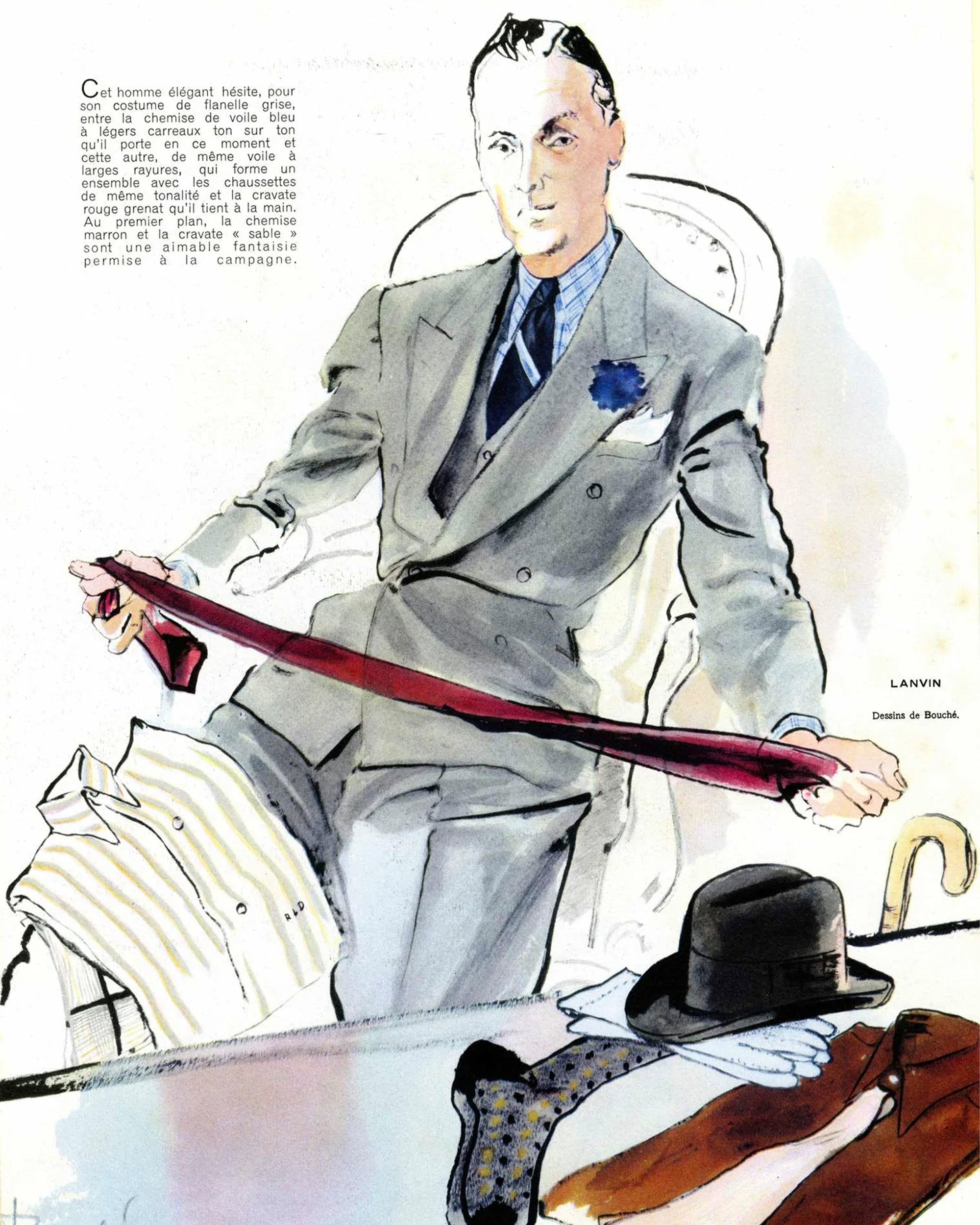
1926 - Lanvin For Men
Nothing escaped Jeanne Lanvin’s discerning eye. In 1926, she became the first Parisian designer to launch a made-to-measure clothing line for men.
When “Lanvin Tailor-Shirtmaker” took up residence at 15 Rue du Faubourg Saint-Honoré, it was the only place in Paris that offered both Men’s and Women’s collections. Suits, ties, pajamas, day clothes, and sports attire: to satisfy her male clientèle, Jeanne Lanvin called upon three great French tailors and entrusted the department’s management to her nephew Maurice Lanvin.
Illustration from Adam magazine, 1938 © DR

1946 - Lanvin After Jeanne
On July 6, 1946, Jeanne Lanvin passed away peacefully at the age of 79. Jeanne— the milliner, the designer, the decorator, the perfume manufacturer , “Madame” as her staff called her—left behind an empire in her wake.
After Jeanne Lanvin passed away, her daughter Marie-Blanche became president of the company and continued to design collections until 1950. Several designers succeeded her with the ambition of keeping the brand’s expertise, state of mind, and excellence intact.
Marie-Blanche de Polignac, circa 1946 © DR / Patrimoine Lanvin
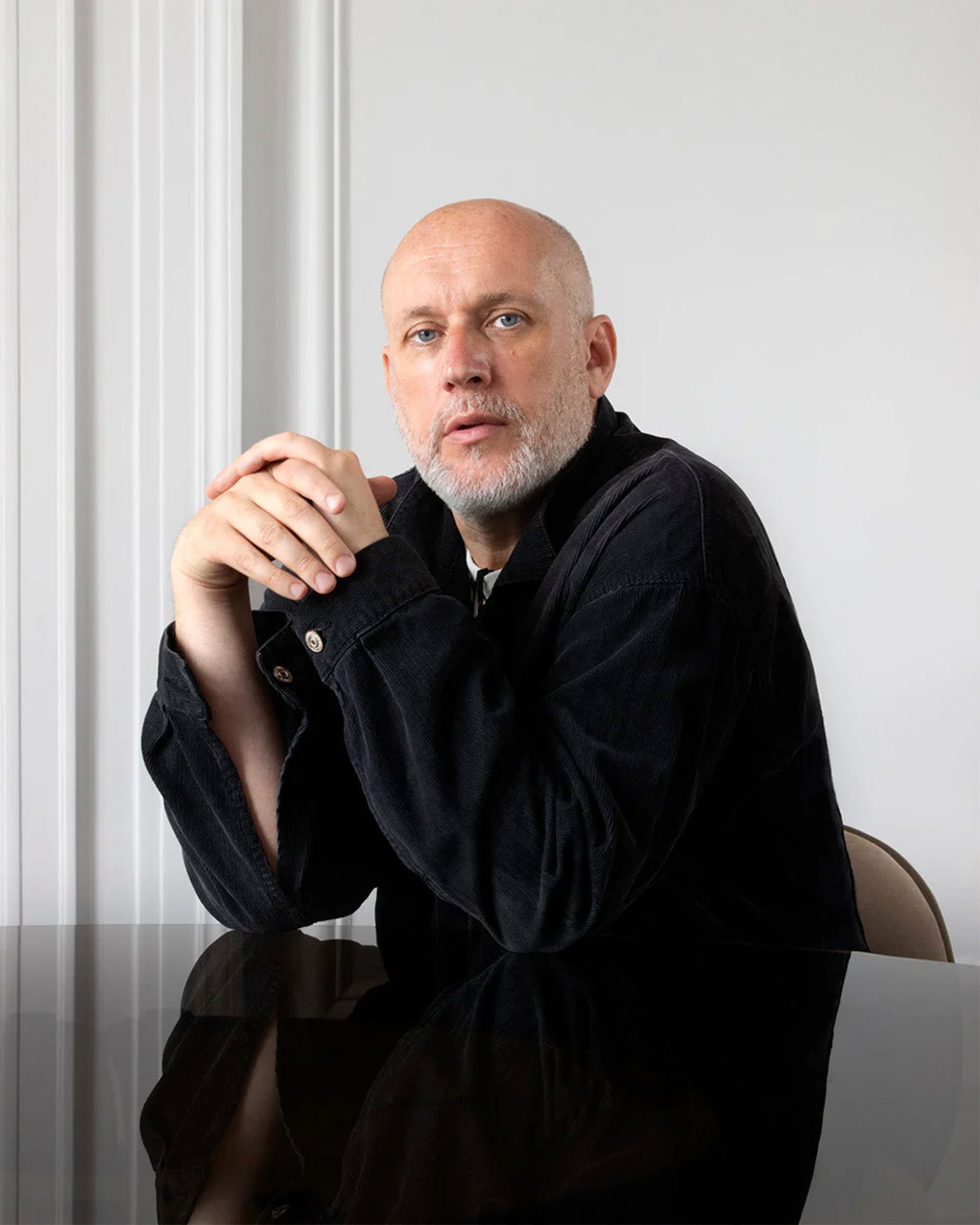
2024 — PETER COPPING
Lanvin is pleased to announce the appointment of Peter Copping as Artistic Director.
The maison will welcome Copping as the creative lead for womenswear and menswear collections effective September 2024.
A British national and graduate of Central Saint Martins and the Royal College of Art in London, Peter Copping began his career at Sonia Rykiel and then spent over a decade at Louis Vuitton with Marc Jacobs as head of womenswear. He was subsequently named Creative Director of Nina Ricci in Paris and Oscar de la Renta in New York, where Mr. de la Renta, who had himself been a designer at Lanvin under Antonio Castillo, designated Copping his successor. Most recently, Copping served as Head of Couture at Balenciaga where he directed the ateliers for the reintroduction of the couture collection and subsequently as Head of VIP and Special Projects.
“Jeanne Lanvin was a visionary of her time whose interests and passions extended far beyond fashion, as do my own. I am extremely honoured to have been chosen as Artistic Director of Lanvin and to be able, along with the atelier and teams, to write the next chapter for this iconic house”,
said Peter Copping.
